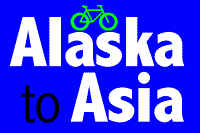News at the Border
At Nepalís border town, our passports were stamped and we entered no-manís land. Here we bumped into a Nepalese tourist officer, and asked what was happening in the news. "Big changes in Afghanistan," he said, "Pakistan has changed sides, and America is using Indian air bases. Itís now Afghanistan and Pakistan against America and India."
So it was with some trepidation that we entered India. Our first impression, perhaps surprisingly, was of prosperity - Nepalís Terai did not have such luxuries as cars. Our first Indian town was Moradabad, the unlikely source of almost all horse-brasses sold in the UK. Here we sampled the first of a great many excellent Indian meals, as well as Indian bureaucracy - it took more than an hour to check in to a hotel!
Rules of the Road
Towards Delhi, traffic increased to crazy proportions on the National Highway. The principal rule of the road in India is that right-of-way is awarded to the biggest vehicle, with bonus points awarded for loud horns, particularly when used enthusiastically. Bicycles have higher status than the many pedestrians, and are perhaps equal to ox-carts, but lower than all motorized traffic. Trucks and buses vie for the higher ranks, topped only by the most important Indian road-user: the cow.
Delhi
Delhi surprised us by being clean and modern. For the first time since Istanbul, we saw western chain stores. Itís amazing how excited you can get about Wimpy and Pizza Hut when you havenít seen them for months! With limited time available, we decided to travel to the South of India and continue cycling there. We took the train directly to the southern city of Trivandrum, a two-and-a-half day journey. A few hours after leaving Delhi, Dan regretted ordering the train food and suffered food poisoning for the next two days!
South India
Kovalam Beach in Kerala is fast becoming a popular package holiday destination, and we enjoyed the beautiful palm-lined beach for a few days. As with many places in India, Kovalam is marked by contrasts - the peace and natural beauty of the beach contrasting with the non-stop traders: "fish, sir? Fish, yes, very nice fish. This way sir, yes, fish, fish, very nice fish" and so on.
Cycling north along palm-lined roads, we passed a timber-yard using an elephant to move logs around. Elephants are very much used as working animals in South India. Another major local industry is the processing of coconut-palm fibre into ropes and other products, such as door mats. Much of this labour-intensive work is carried out by locals on the road side.
Hills and Tea
Heading inland to the Western Ghats, we stayed on a Keralan spice farm and were shown traditional Keralan cooking methods, and the spices used in them. We then continued through huge tea estates on a 40 km climb to the hill stations of Coonoor and Ooty. Wildlife in this region included large populations of monkeys. In Mysore, we visited the opulent palace of the old Maharajah, who apparently still lives in a small wing of the building.
Mumbai and Goa
We had arranged to meet Lucy and Simon in Mumbai (Bombay), so took a train and arrived in a poor area of town. Despite spending more than a month in India, the poverty and squalor was quite striking - huge areas of the city are occupied by slums. It was a relief to leave for Goa, where we cycled little and relaxed a lot on the beautiful quiet beaches.

